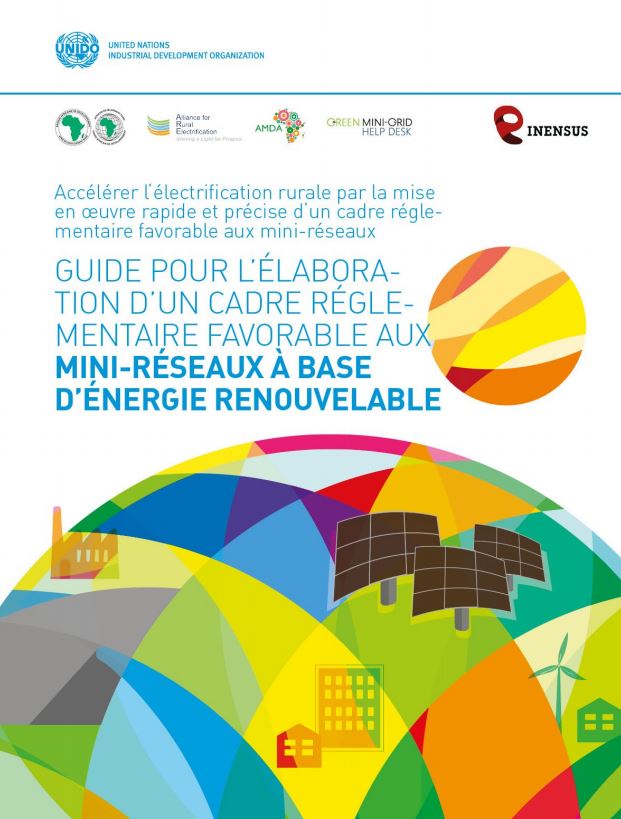Clean Energy Mini-Grid Policy Development Guide
 |
Guide pour l'élaboration d'un cadre réglementaire favorable aux mini-réseaux à base d'énergie renouvelable
Accélérer l'électrification rurale par la mise en oeuvre rapide et précise d'un cadre réglementaire favorable aux minis-réseaux
guide , document pédagogique écrit Mar 2021 ; 51 pages
Ed. ONUDI - Paris
Téléchargeable sous format: PdF
Téléchargeable chez l'éditeur
Abstract:
Mini-grids have been identified as a critical tool towards achieving universal electricity access by governments, donors and private sector actors alike. To enable the sustainable deployment of mini-grids, the public and private sector need to cooperate. Policies and regulations which support the most suitable mini-grid delivery models need to be developed to allow the sector to scale. The Clean Energy Mini-Grid Policy Development Guide, developed in partnership by ARE, AMDA, UNIDO, INENSUS and the AfDB Green Mini-Grid Help Desk, outlines the various forms and models that public-private cooperation could take and reflects on the outcomes of policy decisions on mini-grid deployment.
While the guide is not exhaustive, it provides an overview of the most important aspects of mini-grid policy, with the aim of supporting policy makers to accelerate mini-grid deployment and to help guide national debates and decision making on rural electrification policies and frameworks.
The guide incorporates lessons learnt from existing mini-grid policies and regulations and presents the key decisions that need to be taken by policymakers in designing the most appropriate mini-grid framework for their country. A decision tree designed for policymakers outlines which combination of key decisions leads to which outcome.
Five critical conclusions may be drawn from the guide:
1. Sustainable mini-grid business/delivery models require scale.
2. The way in which mini-grids are ultimately deployed, including the degree of private sector involvement, depends on decisions taken by government.
3. Large government control over mini-grid deployment, minimum financial subsidies and low end consumer tariffs cannot all be achieved at the same time.
4. The development of electricity demand in rural areas is difficult to predict, making it important to introduce demand risk mitigation instruments in the policy framework.
5. The risk of a sudden end to the project, i.e. the termination risk, ought to be considered by policy makers and regulators.
Publics-Cibles:
Collectivité , Association , Université , Enseignant , Acteurs de coopération , Ingénieur, concepteur , Socio-économiste , Economiste , Décideurs locaux ou nationaux
Mots clefs: |
électrification (CI) (DT) (OP) , mini-réseau micro-réseau (CI) (DT) (OP) , mode de gestion/gouvernance (CI) (DT) (OP) , rural (CI) (DT) (OP) |
Editeur/Diffuseur: |
|
ONUDI
-
Organisation des Nations Unies pour le Développement Industriel - Paris |
En cas de lien brisé, nous le mentionner à communication@pseau.org